Ecosystem Restoration: 5 Lifestyle Changes To Restore Urban Ecosystems
Humans hold the sack of degrading ecosystems which are actually considered a fabric of life. Among these, urban ecosystems are the ones that continue to grow worldwide and so do environmental problems brought about by urbanization. However, there is still time to restore, amend and save them.
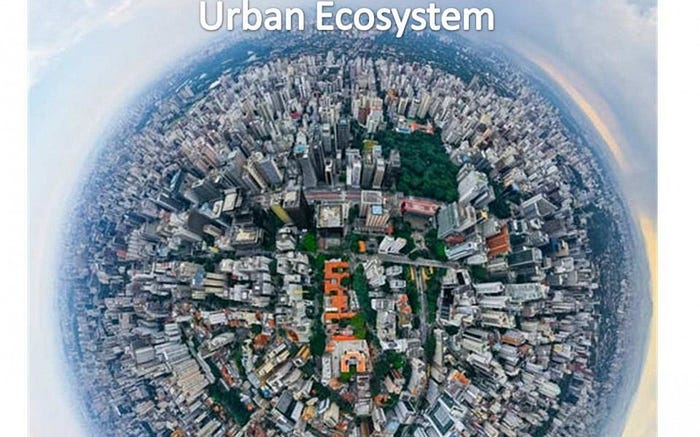
On this World Environment Day, the United Nations marks the beginning of the UN decade on Ecosystem Restoration (2021–30) to prevent, halt and reverse the degradation of ecosystems worldwide. This makes it even more important for each one of us to understand how ‘we’ as individuals can contribute to it.
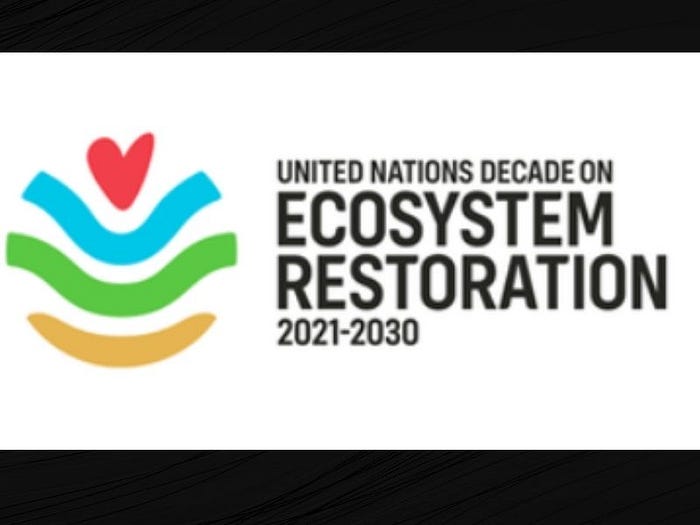
Through inculcating the following changes in our lifestyles we would make a huge difference in the long run:
1. Avoid Single-Use Plastic
Say NO to the plastic straw they offer you with your favorite milkshake. Take what you need with you- your cloth bag, water bottle, etc.
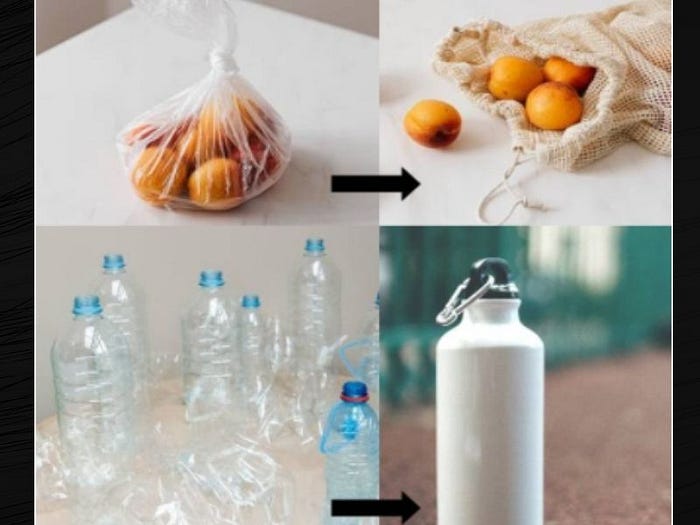
About 50% of the solid waste generated worldwide constitutes single-use plastics. Some single-use plastic items we need to avoid are: plastic cutlery, straws, plates, bottles, thin films, bubble wrap sheets, etc., and replace them with their sustainable alternative like bamboo cutlery and packaging made of beeswax wraps.
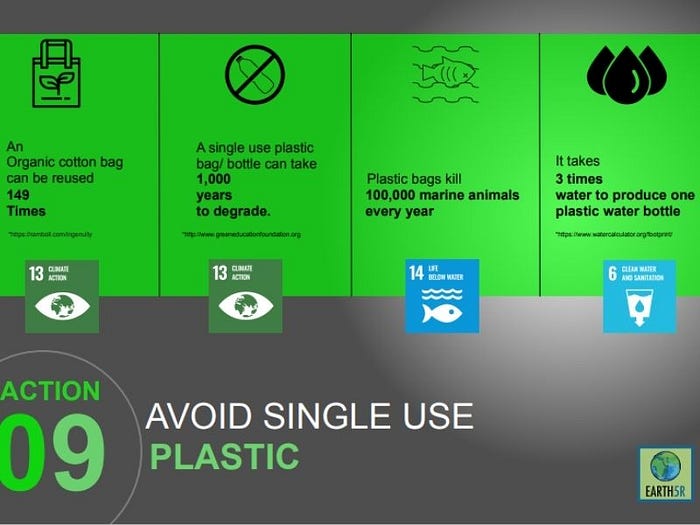
Every year, 500 billion plastic bottles are sold. Altogether, we can curb it from entering our environment if we just pack a flask instead of buying a bottle. Small changes can make a big difference.
Single-use plastics are a bane to the environment that usually end up in a landfill or find their way into the ocean.
2. Reduce your carbon footprint in the ecosystem — Ride your bicycle
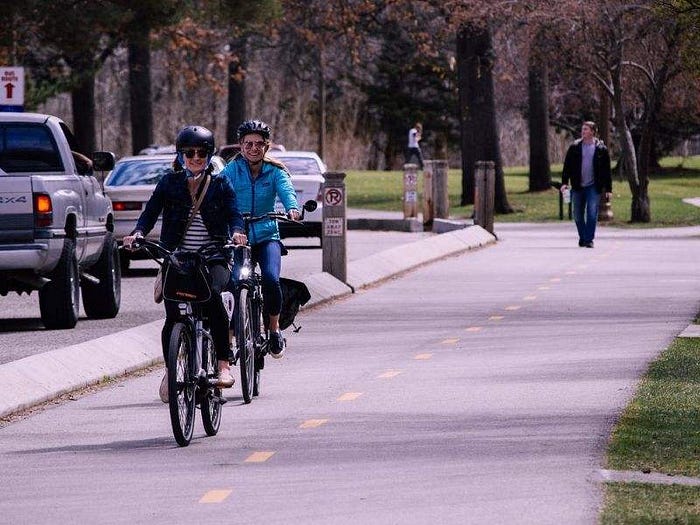
Avoiding motor vehicles and switching to bicycles will help reduce noise pollution and carbon emissions. This reduces the greenhouse effect and improves air quality. Bikes, unlike cars, reduce the need to build service and dispose of thereby reducing waste generation. Bicycle riding even conserves roadway and residential space, therefore providing opportunities for less concrete and more plant life in urban areas.
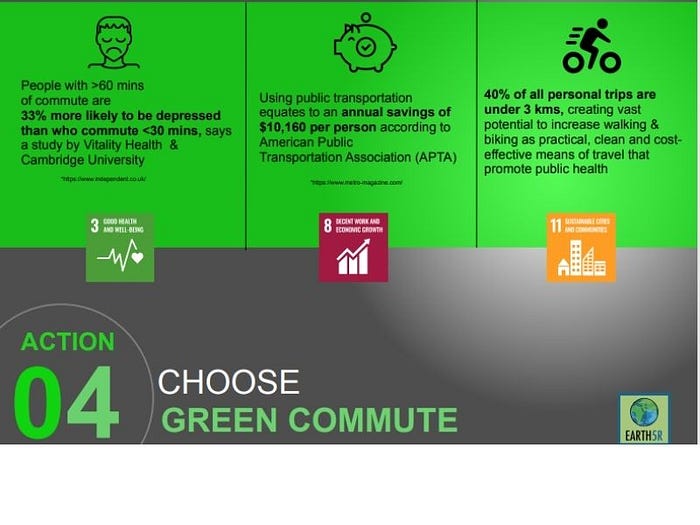
It’s a comfort to know that recognizing cycling’s many benefits, more people in the world now own bicycles than cars. In addition, the number of people commuting to and from work on bicycles has increased significantly in the last decade. Way more to go!
3. Switch to Green Infrastructure
Through building green infrastructure, we build designs which take nature’s assistance in improving the soil, water and air quality of the region. They even tackle the climate crisis. Some green infrastructure designs are:
- Permeable pavements: These pavements have porous surfaces to catch the rainwater and surface runoff, storing it in the reservoir and slowly allowing it to infiltrate into the soil. They help in establishing a natural hydrological balance and reduce runoff volume (Around 70% of rainfall in urban areas is surface runoff). Subsequently, resulting in the recharge of groundwater.

2. Green roofs and vertical gardening: Living walls are part of climate-proof construction. They purify air, reduce ambient temperature, reduce energy use, act as sound barriers to the buildings and increase the feeling of well-being. a space surrounded by plants requires around 33% less air conditioning.
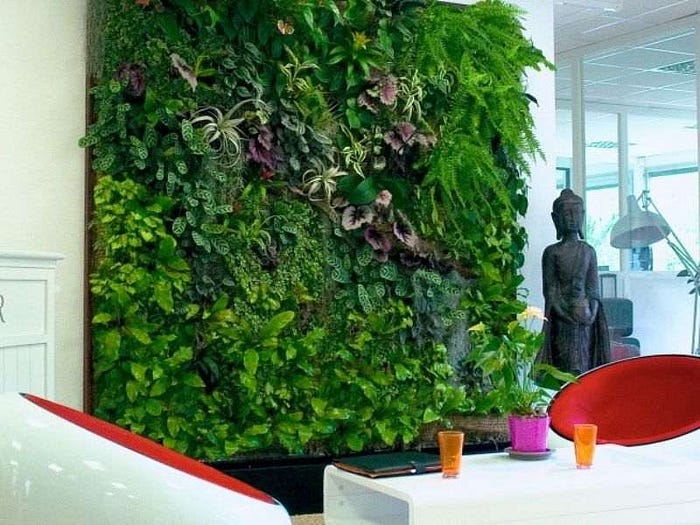
4. Conserve Urban Green Spaces
Modification of land surfaces and air pollution in the urban areas has degraded and turned them into urban heat islands. These human-disturbed areas have more temperature than the surrounding rural areas. This heating effect causes fast evaporation in the ponds and lakes of the urban ecosystem.
Urban green spaces are on average around 1º C cooler, during both the day and night time, then the surrounding built-up regions.
Large parks and woodland regions are able to support the widest range of species, but even small areas of vegetation such as roundabouts, roadside verges, and other green covers can support a range of plants, insects, and birds. Therefore, increasing tree cover, building public parks and gardens helps in reducing the heat effect, provide shelter to migratory birds and promotes biodiversity of the region.
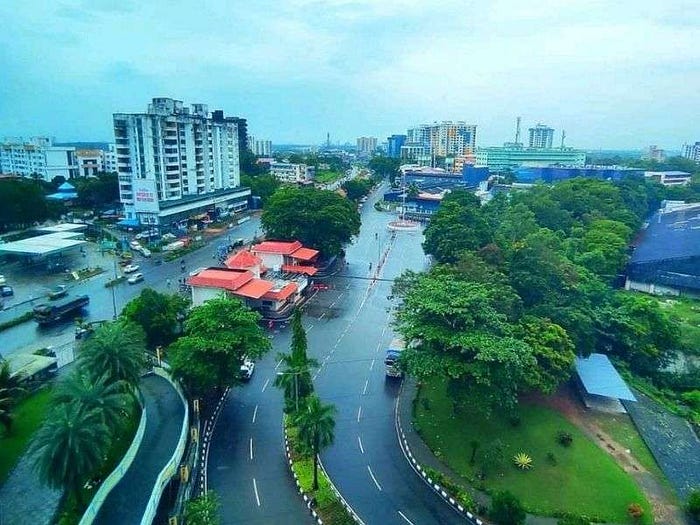
5. Think globally. Spend locally. Buy sustainably
By buying locally we reduce our food miles. Conversely, when we shop at the grocery store, many of the food items we buy travel over 1500 miles to reach our plate. By cutting down on these miles, we are reducing the environmental impact of our food.
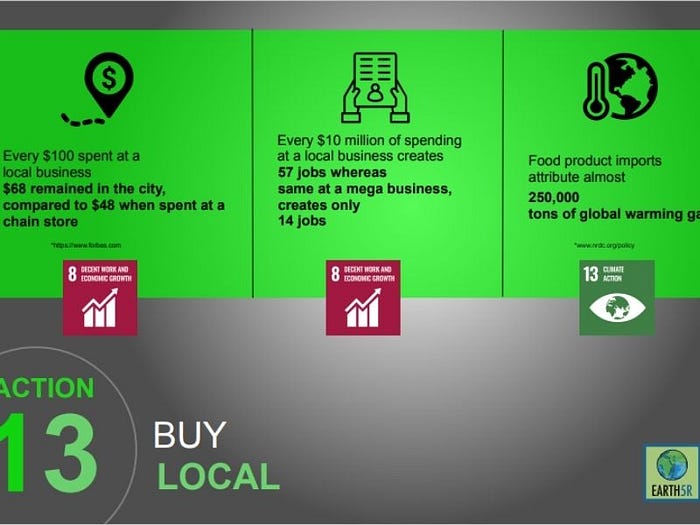
Local food doesn’t create large carbon footprints through overseas plane travel or long truck trips. Also, if you have the chance, buying stuff from the local market is a great way to support local businesses, avoid packaging waste, reduce your carbon footprint and support your ecosystem with your choices.
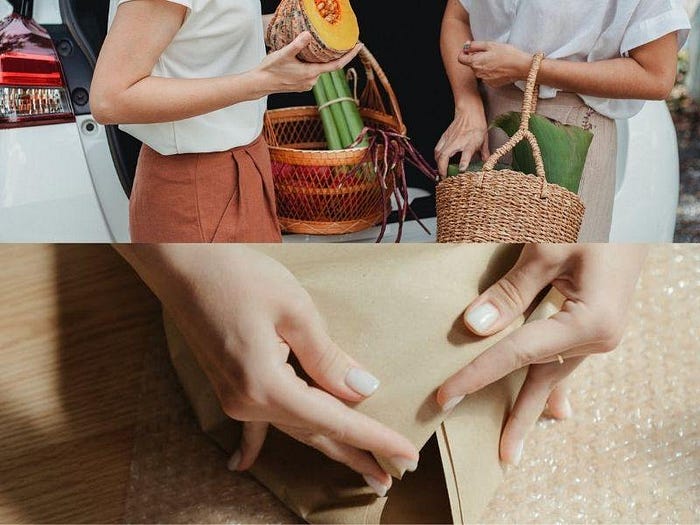
Around 55% of the world’s population is living in urban areas and this proportion is expected to increase to 68% by 2050 (UN Report 2018). With the limited resources around, citizens need to be more cautious of the impact their actions create on the environment. Because every single action counts!
ABOUT EARTH5R
Earth5R is an environmental organization from India with its head office in Mumbai. It works with the NGO sector, Companies and helps them conduct environmental Corporate Social Responsibility (CSR) programs across India.
Earth5R specializes in circular economy-based projects. Earth5R also offers short-term and long-term environmental courses and fellowships.
-Reported by Aayushi Sharma, Edited by Om Nair
